
a.
To construct: a box and whisker plot for each data set.
a.
Answer to Problem 42E
The box and whisker plot for original design
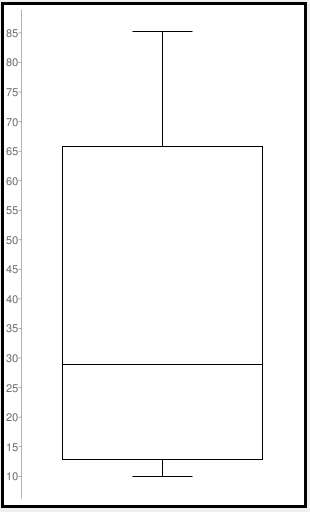
The box and whisker plot for new design
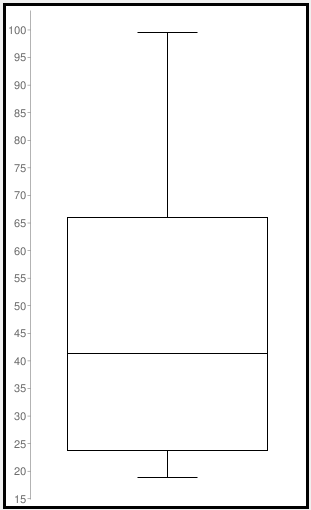
Explanation of Solution
Given:
Original Design
15.1, 78.3, 56.3, 68.9, 30.6, 27.2, 12.5, 42.7, 72.7, 20.2, 53.0, 13.5, 11.0, 18.4, 85.2, 10.8, 38.3, 85.1, 10.0, 12.6
New Design
55.8, 71.5, 25.6, 19.0, 23.1, 37.2, 60.0, 35.33, 18.9, 80.5, 46.7, 31.1, 67.9, 23.5, 99.5, 54.0, 23.2, 45.5, 24.8, 87.8
Concept Used:
The formulas to compute the lower
Where, n is the number of observations.
Median will be 3
Lower quartile will be the median of lower half.
Upper quartile will be the median of upper half.
Calculation:
Ordered data of Original Design
10.0, 10.8, 11.0, 12.5, 12.6, 13.5, 15.1, 18.4, 20.2, 27.2, 30.6, 38.3, 42.7, 53.0, 56.3, 68.9, 72.7, 78.3, 85.1, 85.2
Here n is 20, minimum value is 10.0 and maximum value is 85.2.
Median will be
Lower quartile will be
Upper quartile will be
Median will be
The box plot for the provided data set can be constructed as:
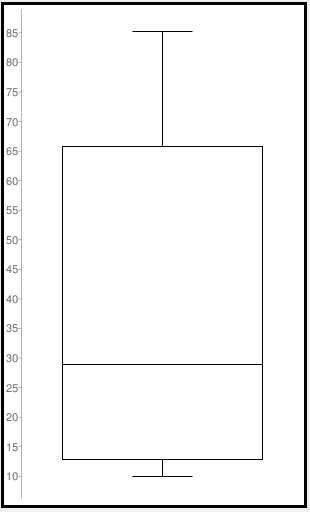
Ordered data of new Design
18.9, 19.0, 23.1 23.2, 23.5, 24.8, 25.6, 31.1, 35.3, 37.2, 45.5, 46.7, 54.0, 55.8, 60.0, 67.9, 71.5, 80.5, 87.8, 99.5
Here n is 20, minimum value is 18.9 and maximum value is 99.5.
Median will be
Lower quartile will be
Upper quartile will be
The box plot for the provided data set can be constructed as:

b.
To Explain: the difference between the given box and whisker plots constructed.
b.
Answer to Problem 42E
Explanation of Solution
Given:
Original Design
15.1, 78.3, 56.3, 68.9, 30.6, 27.2, 12.5, 42.7, 72.7, 20.2, 53.0, 13.5, 11.0, 18.4, 85.2, 10.8, 38.3, 85.1, 10.0, 12.6
New Design
55.8, 71.5, 25.6, 19.0, 23.1, 37.2, 60.0, 35.33, 18.9, 80.5, 46.7, 31.1, 67.9, 23.5, 99.5, 54.0, 23.2, 45.5, 24.8, 87.8
The box and whisker plot for original design
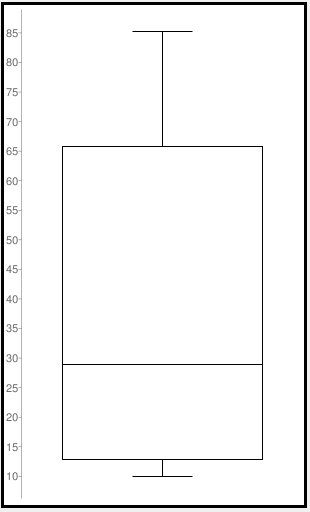
The box and whisker plot for new design
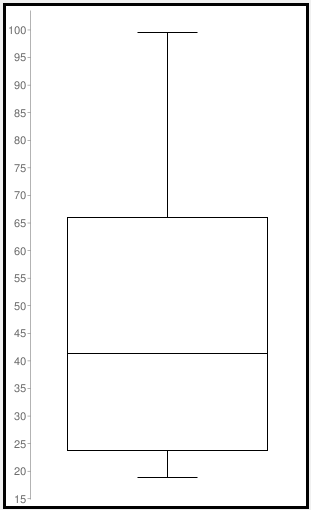
Interpretation:
The above constructed box plot shows that the box and whisker plot of original design is more spread out with the median 28.9 then the box and whisker plot of new design.
It can also be concluded that the life of original design is lower than the lifetime of new design.
Chapter 13 Solutions
EBK PRECALCULUS W/LIMITS
 Calculus: Early TranscendentalsCalculusISBN:9781285741550Author:James StewartPublisher:Cengage Learning
Calculus: Early TranscendentalsCalculusISBN:9781285741550Author:James StewartPublisher:Cengage Learning Thomas' Calculus (14th Edition)CalculusISBN:9780134438986Author:Joel R. Hass, Christopher E. Heil, Maurice D. WeirPublisher:PEARSON
Thomas' Calculus (14th Edition)CalculusISBN:9780134438986Author:Joel R. Hass, Christopher E. Heil, Maurice D. WeirPublisher:PEARSON Calculus: Early Transcendentals (3rd Edition)CalculusISBN:9780134763644Author:William L. Briggs, Lyle Cochran, Bernard Gillett, Eric SchulzPublisher:PEARSON
Calculus: Early Transcendentals (3rd Edition)CalculusISBN:9780134763644Author:William L. Briggs, Lyle Cochran, Bernard Gillett, Eric SchulzPublisher:PEARSON Calculus: Early TranscendentalsCalculusISBN:9781319050740Author:Jon Rogawski, Colin Adams, Robert FranzosaPublisher:W. H. Freeman
Calculus: Early TranscendentalsCalculusISBN:9781319050740Author:Jon Rogawski, Colin Adams, Robert FranzosaPublisher:W. H. Freeman
 Calculus: Early Transcendental FunctionsCalculusISBN:9781337552516Author:Ron Larson, Bruce H. EdwardsPublisher:Cengage Learning
Calculus: Early Transcendental FunctionsCalculusISBN:9781337552516Author:Ron Larson, Bruce H. EdwardsPublisher:Cengage Learning





